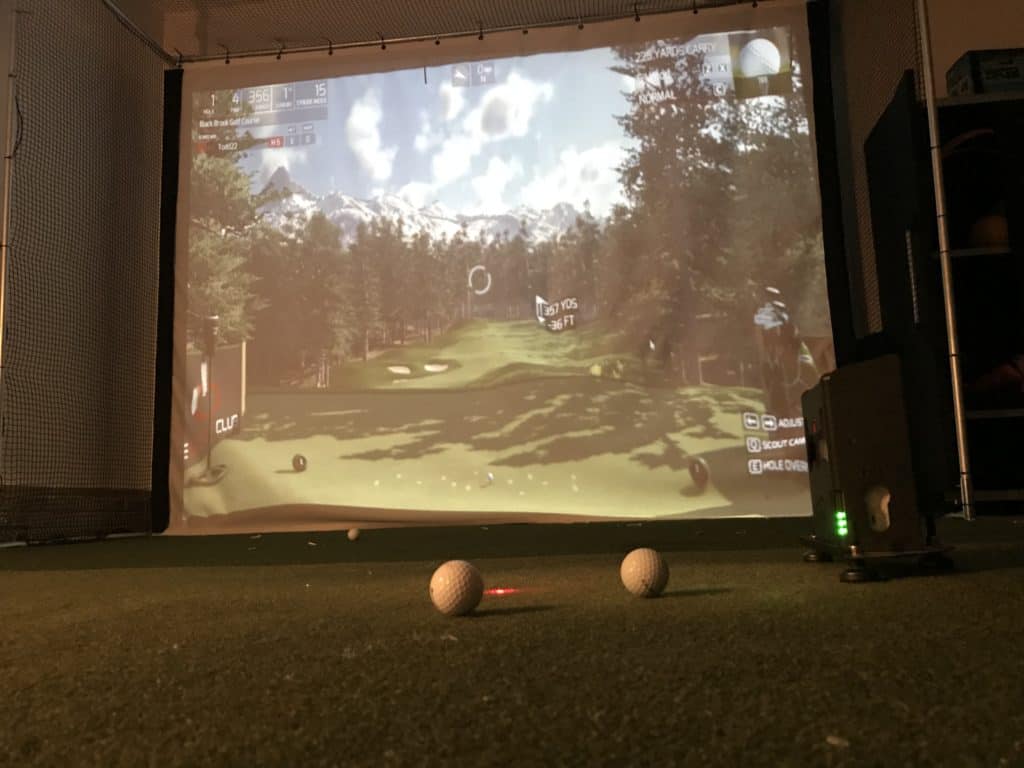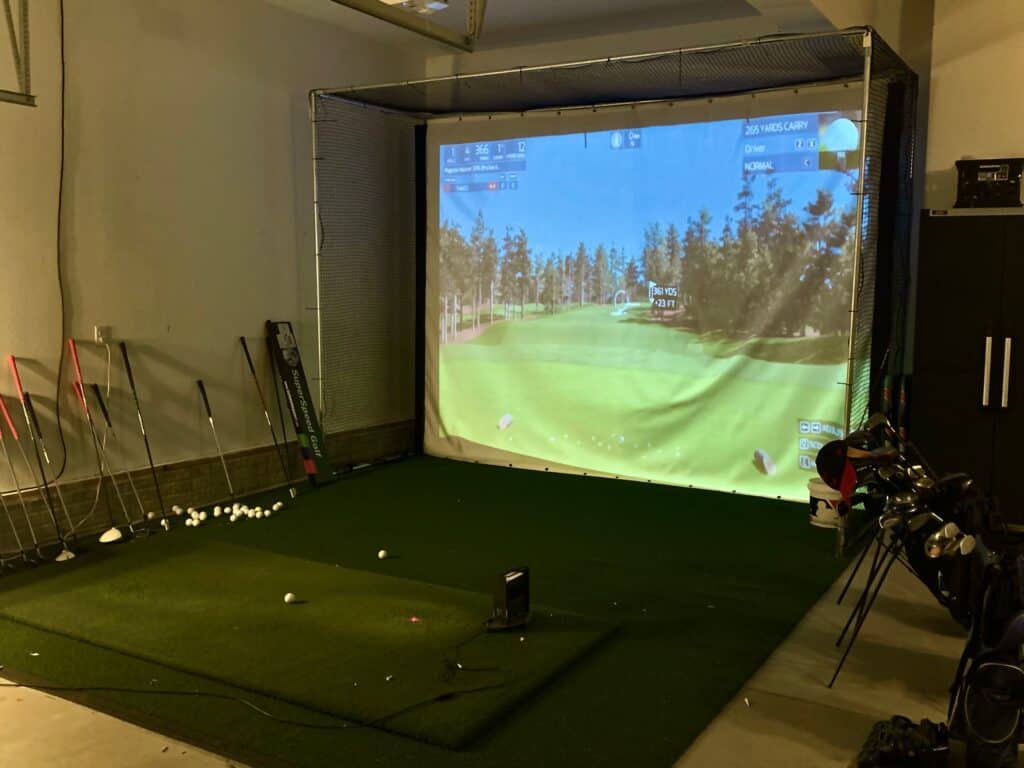Generally speaking, if you swing speed with a driver is below 95 or your handicap is over 12, a 7 wood is the recommendation. Once your swing speed gets close to 100 miles per hour with the driver and you get into a single digit handicap range, the 4 iron might be a better club to the additional precision you might gain.
The choice between which different golf clubs to put in the bag can seem overwhelming.
Many golfers struggle with deciding between fairway woods vs longer irons. Most of the recommendations on which one you should use could come down to 3 factors:
- Your current swing speed
- Your current handicap
- The benefits of either club
A golfer needs to consider their current swing speed, their current handicap and the benefits of the various golf courses. Ultimately, golfers should find a way to compare the various clubs.
We believe that the golfers should pay extra attention in the 175-225 range and the 125 yard range and in. A high percentage of shots are lost by high handicap golfers in both of these ranges due to poor contact in the 175 plus range or complete lack of knowledge on how far they carry a club from 125 yards and in.

Let’s dive into today’s topic in depth:
7 Wood vs 4 Iron: Which one should I carry?
Update: Many amateur golfers will struggle with the 4 iron. However, if you can carry the 4 iron 185 and make consistent contact, it can have some quality precision and provide the golf great confidence. If you are someone that has struggled with the 4 iron over the years, go with the 7 wood and give yourself the necessary confidence to hit the ball higher and futher!
This recommendation is built on the strengths of each club. When a swing speed is slower and the overall contact might be average to below, the 7 wood is a quality club as it provides a larger margin or error and is built to help the golfer launch the ball higher.
The 4 iron on the other hand is a quality option for the golfer that can strike the ball solid with quality swing speed as it helps with the precision related to distance control and shot dispersion.
7 wood vs 4 iron: Length and Loft
- 7 wood: Shaft length = 40-41” and Loft = 21-22 Degrees
- 4 Iron: Shaft length = 38” and Loft = 25 degrees
Below, we will dive into the benefits of each club.
Benefits of a 7 Wood
- Easy to hit high
- Versatile from different lies
- Lands softly
Vs
Benefits of a 4 Iron
- Quality distance control
- Ability to control the height of a shot
- A tighter shot dispersion
7 Wood: Easy to hit high
The 7 wood is designed with a low center of gravity to allow the golfer to get quality height from the shot. The fairway woods and hybrids in today’s golf market are designed with the slower swing speed and higher handicap golfer in mind.
The goal of these goals is to provide a tool to allow the golfer to hit higher, quality shots that will land softly and the 7 wood accomplishes this goal. For many golfers, they will fall in love with their 7 wood and it will be their favorite club in the bag.
The golfer that lacks swing speed with the driver might find themselves frequently reaching for the 7 wood for their 2nd shot on par 4s and par 5s.
7 Wood: Versatile from different lies
When a golfer is in the rough and has a slow swing speed or lacks strength, the 4 iron will often twist and turn due to the design. The opposite is true for the 7 wood. It will stay more stead and provide the golfer with the best chance for a quality shot.
Back to the days of the Adams Tight Lies, fairway woods have changed forever. They are a great option for many golfers, especially out of the rough. Golfers can utilize with great confidence from the fairway, rough or even a fairway bunker.
5 wood vs 7 wood: what is best for your game?
7 Wood: Lands softly
Due to the extra heigh a golfer will gain with the 7 wood, the ball will land softly on the green. This gives a golfer the chance to hold the green from 150 yards and more. The higher handicap golfer can often grow frustrated with a shot that lands on the green, but runs off the back. The 7 wood can help fix that issue.
7 wood vs 4 hybrid: which one should you carry?

4 Iron: Quality distance control
The golfer that is a single digit handicap level player and is looking to take his or her game to the next level, needs the accuracy of distance control. When they are trying to hit a shot 185, they need to hit it 185 and not 195.
The 4 iron is set up to allow the golfer to have this distance control precision. The best golfers have shot charts where they have a very good idea of how far they carry each club and will sometimes build it out to increase a 90%, 80% and 70% distance with each club in the bag.
3 iron vs 4 iron: what is the difference?
4 Iron: Ability to control the height of a shot
With a fairway wood, it can be difficult to hit low, medium and high shots on demand. The 4 iron is superior in the ability to control the height of the shot.
By changing the ball position and the release of the club, the best golfers are able to control the height of the shot. This becomes especially important when the golfer is playing the wind or on certain conditions on the course such as firm or really soft.
4 Iron: A tighter shot dispersion
The best golfers will play to certain spots on the green and hope to hit it within a 20-30 foot circle of the aim point. The 4 iron is designed to have a tighter dispersion as the short accuracy is one of the features of the club.
The single digit handicap player will need this extra precision as they play the more difficult courses where there is plenty of bunkering around each green and green complexes become more difficult.

7 Wood vs 4 Iron: Next Steps
- Test out
- Build a distance chart
- Practice a stock shot
Next Steps: Test out your options
We made a large generalization with the swing speed below 95 and a handicap of 12 or higher, but there are always exceptions to rules like this. This is why we recommend testing out the different options that are on the golf market today.
I would highly recommend every golfer using the technology that is available in launch monitors like the Skytrak or Mevo+. These devices can be great to track data such as the following:
- Ball Speed
- Carry and Total Distance
- Shot Dispersion
- Launch Angle
- Spin Rate
- Spin Axis
Here are the top 3 options to check out:
Next Steps: Build a distance chart
With any of the three launch monitors listed above, we would also recommend building a distance chart that will look like the one below:
I would highly recommend each golfer create a distance chart like the sample below:
| Club | Carry Distance (100%) | 90% | 80% |
| 2 Utility Iron | 210 | ||
| 4 iron | 190 | ||
| 5 iron | 181 | ||
| 6 iron | 171 | ||
| 7 iron | 163 | ||
| 8 iron | 153 | ||
| 9 iron | 143 | ||
| P Club | 130 | 123 | 115 |
| Pitching Wedge | 118 | 110 | 102 |
| SW Club | 105 | 97 | 91 |
| LW Club | 90 | 82 | 74 |
This might be the most important information you can use to help you play quality golf. I have heard so many stories and have seen it first hand where golfers completely over estimate how far they hit each iron.
They hit one 7 iron 165 yards one time and think this is their carry distance. So they step up to a 165 yard shot, hit the 7 iron and end up in a bunker. They blade it out of the bunker and are looking at a double bogey as their reality. Instead, if they had the right club and hit the 6 iron, their chance of hitting the middle of the green would increase greatly!
How can you create your own chart?
Best Option: I would highly recommend a launch monitor!
These portable devices can be used at the driving range, golf course or set up in your home net or golf simulator. These devices are game changers not only on being able to map your bag and know your distances, but they also provide quality feedback after on every shot and provide the following information:
- Carry Distance
- Spin Rate
- Launch Angle
- Spin Axis
- Total Distance
- Ball Speed
This information will help you map your bag, decide on which clubs are best for your game, develop a stock shot and much more. I love using my SkyTrak 365 days a year in my golf simulator setup.
The process for mapping your bag can looking something like this:
- Hit 5 shots with each club in your bag.
- Log the carry distance and total distance for each shot.
- Eliminate any outlier numbers (poor hits or low spin rates).
- Take the average and create a map of your bag.
If you visit any PGA Tour event you will see plenty of golfers utilizing their launch monitors. While most can’t afford a Trackman, there are some very affordable options in the 500-2000 dollar range. I own the Skytrak and think the world of it.
Next Steps: Practice a stock shot
Regardless if the 7 wood or 4 iron is best for your game, the bottom like in order to play our best golf we must be able to control the start line and the curve of the ball. No matter what your current ability level is, the stock shot drill is our go to drill to help us find the consistency that we crave. When golfers describe the consistency they want it is often about having a predictable shot pattern.
The Drill: Stock Shot Drill
- At the driving range, set up an alignment stick about 6-8 yards in front of you, straight down your target line.
- If you have a second alignment stick, set the stick 3-4 feet right of the first stick (for a draw) or left of the first stick (for a fade).
- Complete your initial assessment see how many times out of 10 you can start the ball to the right or left of your target. Pick one side and measure your game at this point.
- The goal is to eventually get 7 out of 10 shots to start to the correct side and draw back towards the target.

My Secret To Golf Improvement
Let’s face it, in order to get really good at golf, we must practice frequently. About three years ago, I made the leap and invested in a golf simulator build for my garage. I went with a SkyTrak Launch Monitor and the TGC software and can now play over 100,000 courses including Augusta, Pebble Beach, Bethpage Black, Whistling Straits. St. Andrews and many other of the top 100 courses in the world.
This golf simulator setup, which is more affordable that you might imagine, has been a game changer. I can now play golf everyday of the year regardless of rain, snow, cold weather or time of day. I can practice or play rounds of golf. I can stand in the 11th fairway at Augusta and with the auto-rewind feature I am able to practice my approach shots from various differences.
It is worth checking out through Rain or Shine Golf as they offer some incredible packages along with financing offers that are difficult to beat.
Some direct links to Rain or Shine Golf for pricing and financing:
Take Action – What You Can Do Today to Get Better
What does this mean for you? I believe in the following recipe to get better:
1 – Improve your motion in the golf swing by identifying a golf instructor. Here are some options:
Here is a list of golf instructors that we have reviewed:
2 – Train to swing faster and improve your swing speed. Here are some options:
Looking to gain more Speed and Distance in your swing. Two Options:
3 – Understand course strategy and work to break through your next barrier. Here is a series on breaking through:
We have provided guides on how to break 100, 90, 80 and 70. Check out more below, if interested.
4 – Practice Frequently
Did you know that I build a golf simulator in my garage and have played over 500 rounds of golf on my SkyTrak system? It has been a game changer and one worth checking out. Here are some of my other posts on golf simulators frequently asked questions:
- Is a Golf Simulator Worth It?
- How to Build a Golf Simulator?
- What is the Best Golf Simulator?
- Golf Simulator Accessories?
- How to Build a Golf Simulator for under $7000
- Top 11 Reasons to Buy a SkyTrak
- How to Build a Golf Simulator for Under $1000
- Why Build A Golf Simulator?
- What Space is Needed?
- Can A Golf Simulator Improve My Game?
- How Much Does A Golf Simulator Cost?
- Don’t Forget to Check out our 15 best golf swings of all time.
I am an amateur golfer on a journey to get better, enjoy the game as often as possible and share my passion and knowledge with others. I have coached high school golfers at a high level and have a great passion for the game and want to give back. I enjoy learning about the golf swing and am currently studying to be a certified professional golf instructor. Join me in our journey to get better everyday. Thank you for reading!

